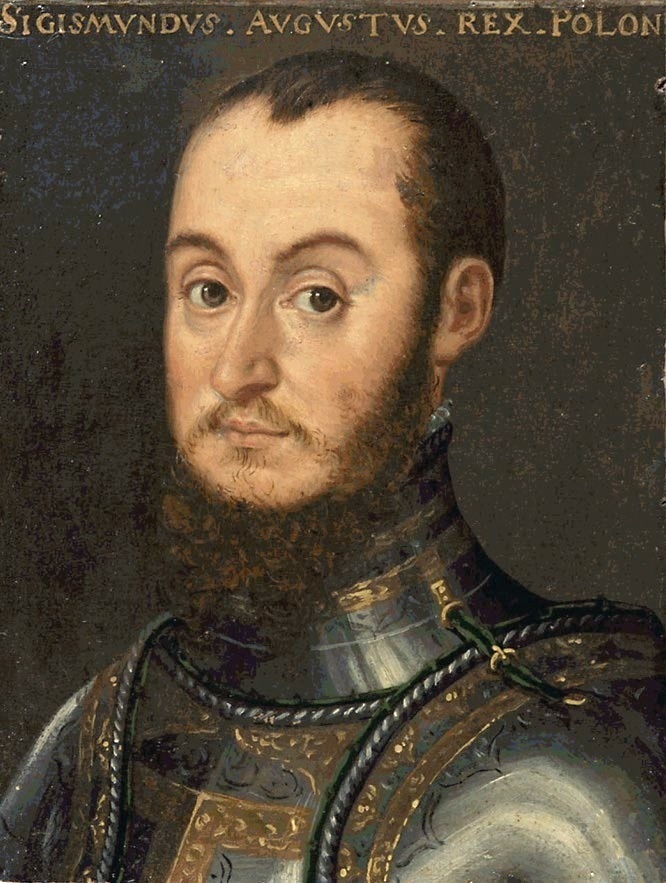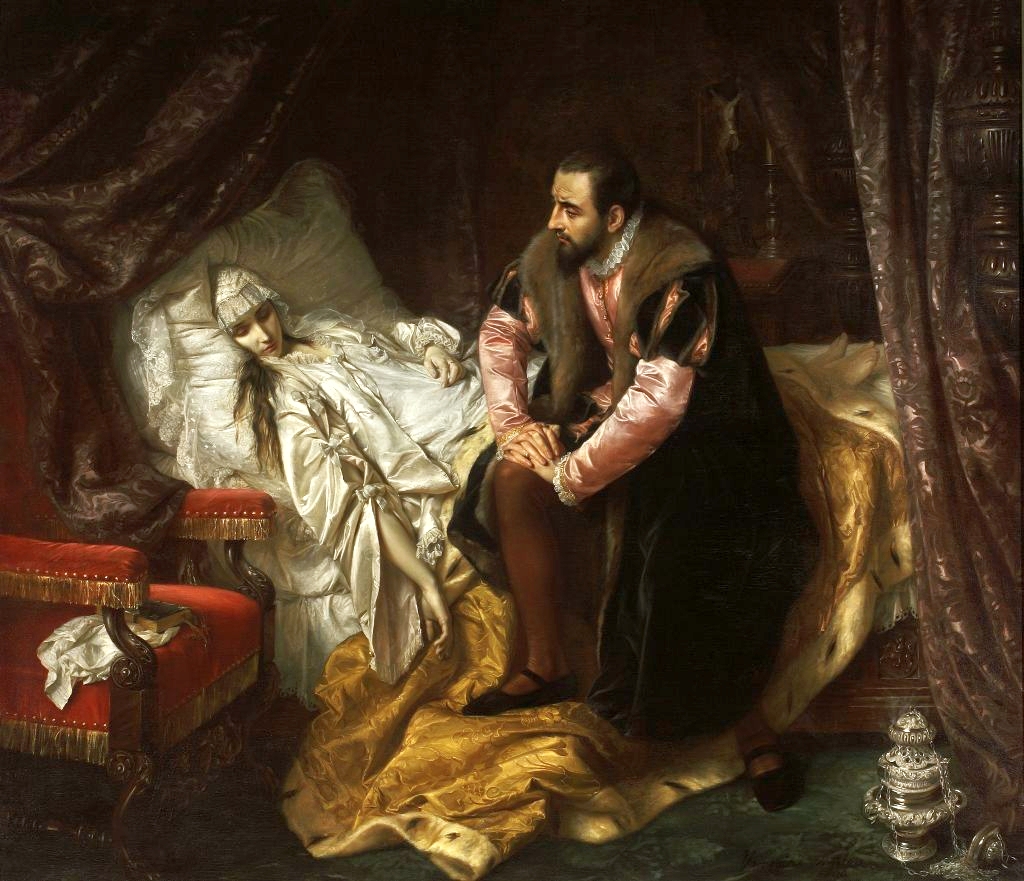


In the history of Poland, many royal marriages have attracted attention due to their political and cultural significance. One of the most fascinating and romantic royal relationships in Poland was the equally famous and controversial marriage between Sigismund Augustus, the first and simultaneously the last ruler of the Polish-Lithuanian Commonwealth from the Jagiellon dynasty, and Grand duchess of Lithuania, Barbara Radziwiłł. This marriage constituted not only an exceptional love story but also had an impact on the fate of the nation and the shaping of its cultural identity. Let's travel back in time and take a closer look at this extraordinary relationship, which has ignited and continues to ignite the imagination of successive generations of Polish men and women.
Sigismund Augustus and Barbara Radziwiłł were figures living in the 16th century, a time when Poland was one of the most powerful states in Europe. Sigismund Augustus, the son of Sigismund I the Old and Bona Sforza, was chosen as the King of Poland in 1530 at the mere age of ten, during his father's lifetime. This was influenced by his mother, who, to put it euphemistically, was not esteemed among the noble community. The young ruler inherited the throne in a difficult period when Poland and Lithuania had to face internal and external challenges.
Barbara Radziwiłł, on the other hand, was born between 1520 and 1523 as the daughter of Jerzy Radziwiłł, a Lithuanian magnate, and his wife Barbara from Koła, placing her among one of the most powerful magnate families in Lithuania. Her beauty and intelligence quickly caught the attention of the royal court, especially Sigismund Augustus.

Barbara Radziwill: Lucas Cranach the Younger; 1555/1565 r.
Political marriages were then the norm among the ruling European dynasties, and it was rare to find true feelings between spouses. Against this backdrop, the case of Sigismund and Barbara, who shared a sincere love, was exceptional. Their romance, which bloomed secretly during the life of the king's previous wife - Elizabeth of Austria, quickly became legendary. A legend, we might add, with multiple facets. On the one hand, non-dynastic Queen Barbara became the subject of mockery and journalistic persecution by the noble opposition, while on the other hand, she embodied love overcoming obstacles and uniting the betrothed despite the vicissitudes of fate. It’s also worth adding that the union of Barbara and Sigismund was not in any way a precedent-setting solution in the history of the Polish crown. For example, Sigismund’s great-grandfather and the progenitor of the Jagiellon dynasty - Władysław Jagiełło, was linked with Elizabeth of Pilica, who was incidentally Barbara's great-great-great-grandmother, a woman for whom any aspect of dynastic relevance was out of the question.

Portrait of King Sigismund Augustus in armour; Kunsthistorisches Museum, Public domain, via Wikimedia Commons
In 1547, at the age of 27, Barbara became the second wife of Sigismund Augustus. This event caused a lot of controversy, both at the court and among the Polish-Lithuanian nobility. The secretive circumstances of the ceremony itself, as well as the suspicious noble connections of Barbara with two influential and extremely ambitious Lithuanian magnates - Mikolaj the Black and Mikolaj the Red Radziwiłł - added spice to the affair. There were even accusations against the magnates of pimping their relative to the king. They were attributed with ulterior motives, foremost among them the desire to manipulate the monarch through the royal bedroom.
The difficult situation of the spouses was also influenced by political frictions between Poland and Lithuania within the union formed over one hundred and fifty years earlier. Internal disputes in the state made the situation complicated. Barbara was perceived as a Lithuanian and a partisan of the Lithuanian magnates, causing dissatisfaction among the Polish nobility grouped around the Executionist Movement.
Regardless of the political and dynastic controversies associated with Sigismund Augustus's mésalliance, it should be clearly and emphatically noted that the couple was united by genuine affection, expressed by the monarch himself during the last, most difficult moments of their relationship. Barbara's health quickly deteriorated significantly. The queen died in 1551, ravaged by a deadly and extremely debilitating disease. Her husband, however, remained steadfastly by her side, watching over her bed regardless of the time of day or night. Chroniclers mentioned the foul smell emanating from the body of the seriously ill Barbara, which even her most loyal supporters and servants couldn't bear, while Sigismund stayed with his beloved until the very end.

Death of Barbara Radziwiłł; Józef Simmler, Public domain, via Wikimedia Commons
Barbara passed away at the young age of just 30. Her death was a huge blow to the king. After her demise, feeling the duty to extend the dynasty and secure the Polish-Lithuanian union, he decided to enter into another marriage, this time with Catherine, the younger sister of his first wife. However, this marriage, like the two previous ones, turned out to be childless, and with the death of Sigismund Augustus, the male line of the Polish-Lithuanian branch of the Jagiellon dynasty died out. The ruler died childless in 1572, but managed to achieve a lasting union of Poland and Lithuania into one state, henceforth known as the Polish-Lithuanian Commonwealth.
The relationship between Sigismund Augustus and Barbara Radziwiłł was not only a love story but also a political and cultural history. Their short but intense love influenced the fate of the Commonwealth and contributed to the development of Renaissance culture in Poland.
Today, the story of this extraordinary couple is still present in Polish culture, reminding us of the beauty and tragic side of love in the context of great politics. Although their story ended centuries ago, the memory of Sigismund Augustus and Barbara Radziwiłłówna continues to live in the hearts of Poles, inspiring many in search of true affection.
Our guides know many more spicy secrets from the history of the Polish monarchy. After all, Wawel Castle has witnessed numerous fiery romances and dramatic separations. Allow yourself to be invited and take advantage of our offer at: https://oprowadzamy.pl/pl/home/